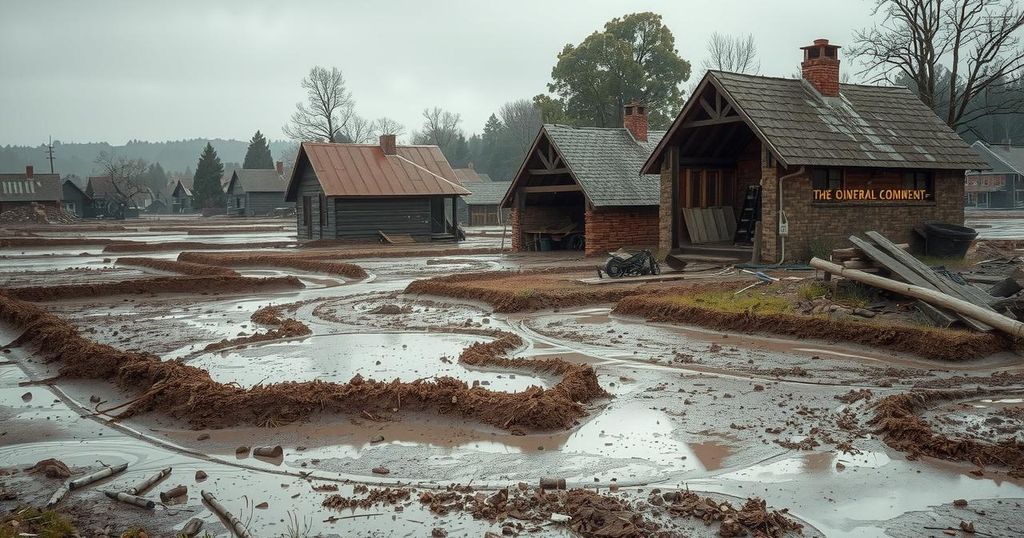World news
ACCIDENTS, AFRICA, ALI SABLAY, BASIC EDUCATION, CAPE, CAROLINE GALLANT, CYRIL RAMAPHOSA, DEATH TOLL, EASTERN CAPE, EMERGENCY RESPONSE, EMMANUEL CROSET, FLOODING, GIFT OF THE GIVERS FOUNDATION, GOVERNANCE AND, JOHANNESBURG, MTHATHA, NATURAL DISASTERS, RESCUE OPERATIONS, SABC, SOUTH AFRICA, SOUTH AFRICAN RED CROSS SOCIETY, VELENKOSINI HLABISA
Sofia Rodriguez
0 Comments
Death Toll in South Africa Floods Rises to 78 as Rescue Efforts Continue
Rescue teams in South Africa have recovered 78 bodies after severe floods in Eastern Cape caused widespread destruction, displacing thousands and damaging infrastructure. The storm has highlighted the vulnerability of the region, with officials warning of more extreme weather and the long-term impacts of climate change.
In Mthatha, South Africa, tragedy has unfolded as rescue teams continue their grim task of recovering bodies following devastating floods. The death toll, which now stands at 78, is a stark reminder of the destruction caused by the winter storm that struck Eastern Cape on Monday. This storm unleashed heavy rains and strong winds that overwhelmed local rivers, leading to widespread flooding.
The extent of the damage is particularly pronounced in Mthatha, situated about 800 kilometers south of Johannesburg. After days of searching through debris and mud, local residents are now attempting to salvage whatever is left of their homes. AFP reporters witnessed a rescue operation where rescue teams retrieved the bodies of four individuals, including children, from a modest dwelling.
Caroline Gallant, who manages the Eastern Cape branch of the South African Red Cross Society, reported that over 3,000 homes have been damaged by the relentless flooding. She labeled this incident as “the worst ever disaster” in the region. Velenkosini Hlabisa, the minister of cooperative governance and traditional affairs, confirmed this tragic update during an interview with SABC News. In addition to the deceased, six students from a school van that was swept away are among the victims, with four still unaccounted for.
Basic Education Minister Siviwe Gwarube shared her condolences while addressing the heartbreaking losses to SABC, expressing that, “We are reeling.” Meanwhile, the Gift of the Givers Foundation reported the recovery of eight additional bodies, including three children, on Thursday evening.
President Cyril Ramaphosa has characterized the floods as “unprecedented” and plans to visit the affected areas by Friday. One rescuer, wishing to remain anonymous, detailed the challenging circumstances their teams face: “We are going door to door.” He recounted experiences of finding individuals trapped inside homes, sadly confirming fatalities in the process.
The harsh impacts of the storm extend to infrastructure, affecting power, water supplies, and forcing at least 600 people to seek refuge in community centers. As efforts to assist those in dire need escalated, the number jumped from 5,000 to 10,000 individuals requiring urgent help, according to Ali Sablay from the Gift of the Givers.
He emphasized the fragility of the damaged homes: “The homes are fragile; they can collapse any time; food is contaminated so people need to be evacuated.” The provincial government has warned of further severe weather expected in the coming days, urging vigilance amongst residents.
Eastern Cape is one of South Africa’s most impoverished areas, with a staggering 72 percent of the population living below the poverty line. The region, infamously known as Nelson Mandela’s birthplace, faces a heavy burden with seasonal snows and rains often resulting in floods. Additionally, the country remains susceptible to the stark realities of climate change, with increasing occurrences of extreme weather. Minister Hlabisa stated firmly, “We must take a tough stance that everyone who is living on a flood plain must be removed. Climate change is a reality now.”
The catastrophic floods in Eastern Cape, particularly surrounding Mthatha, have resulted in the heartbreaking loss of at least 78 lives, with more casualties expected as rescue efforts continue. Thousands have been displaced, and infrastructure damage is significant, highlighting the dire aftermath of the storm. As officials and aid organizations work to address the immediate needs of affected families and communities, the role of climate change in these increasingly severe weather patterns cannot be overlooked. With the threat of future floods looming, calls for precautionary measures are becoming louder. It is clear that robust action is necessary to protect vulnerable populations from the impact of such natural disasters.
Original Source: thepeninsulaqatar.com




Post Comment